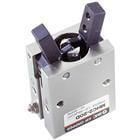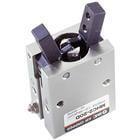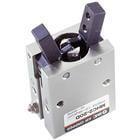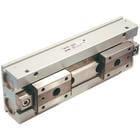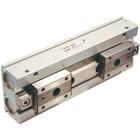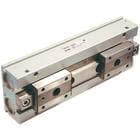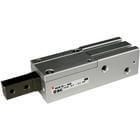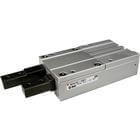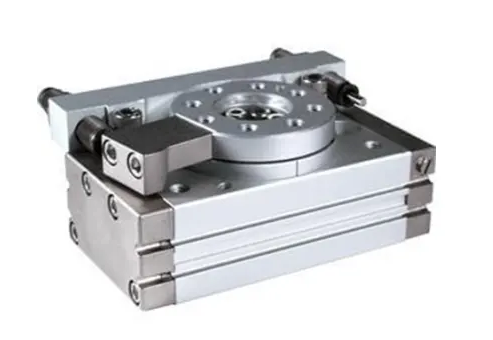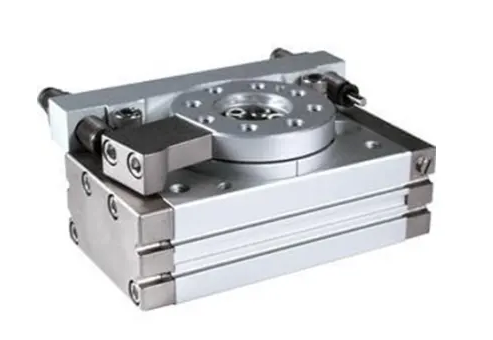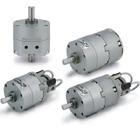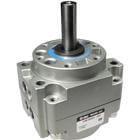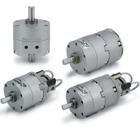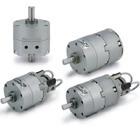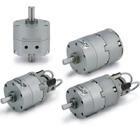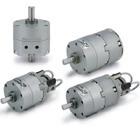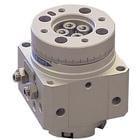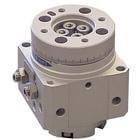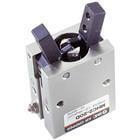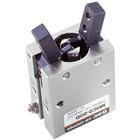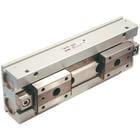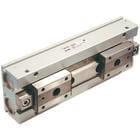SMC Rotary actuators and air grippers
- MHC2
- Air Gripper
- Angular Style
- MHC2
- Air Gripper
- Angular Style
- MHC2
- Air Gripper
- Angular Style
- MHF2
- Air Gripper
- 2 Finger
- Low Profile
- MHF2
- Air Gripper
- 2 Finger
- Low Profile
- MHF2
- Air Gripper
- 2 Finger
- Low Profile
- MHL2
- Air Gripper
- Parallel Style
- Wide Opening
- MHL2
- Air Gripper
- Parallel Style
- Wide Opening
- MHL2
- Air Gripper
- Parallel Style
- Wide Opening
- MIS
- Escapement
- 1 Finger Type
- MIW
- Escapement
- 2 Finger Type
- C(D)RB1*W50~100
- Rotary Actuator
- Vane Style
- C(D)RB2*W10~40-Z
- Rotary Actuator
- New Vane Style
- C(D)RB2*W10~40-Z
- Rotary Actuator
- New Vane Style
- C(D)RB1*W50~100
- Rotary Actuator
- Vane Style
- C(D)RB2*W10~40-Z
- Rotary Actuator
- New Vane Style
- C(D)RB2*W10~40-Z
- Rotary Actuator
- New Vane Style
- C(D)RB2*W10~40-Z
- Rotary Actuator
- New Vane Style
- C(D)RB2*W10~40-Z
- Rotary Actuator
- New Vane Style
- M(D)SUB*1~20
- Rotary Table
- Basic Type
- M(D)SUB*1~20
- Rotary Table
- Basic Type
- M(D)SUB*1~20
- Rotary Table
- Basic Type
- MHC2
- Air Gripper
- Angular Style
- MHC2
- Air Gripper
- Angular Style
- MHF2
- Air Gripper
- 2 Finger
- Low Profile
- MHF2
- Air Gripper
- 2 Finger
- Low Profile
- MHF2
- Air Gripper
- 2 Finger
- Low Profile
- MHF2
- Air Gripper
- 2 Finger
- Low Profile
SMC Corporation is a leading manufacturer of pneumatic components and systems, including SMC air grippers and rotary actuators, which we will discuss in more detail today.
What are SMC Rotary Actuators and Air Grippers?
Let's find out what are SMC pneumatic rotary actuator and air gripper.
SMC rotary actuators are devices that convert the energy of compressed air into rotary motion. They are commonly used in various industrial applications where precise rotary shifting is required.
Rotary actuators provide controlled and efficient rotary movement. They are available in a variety of types, including paddle, rack, and barrel classifications, each suited to specific applications. SMC rotary actuators are known for their high reliability, compact design, and precise positioning capabilities.
SMC air grippers are pneumatic devices designed to grip and hold objects using compressed air. They are used in automation and robotics for the processing of various materials and components.
Such devices typically consist of a body, a piston, and jaws or fingers that close and open to grasp and release objects. The gripping force can be adjusted according to the size and weight of the object. They provide fast and reliable operation, accurate grip control and are widely used in industries such as manufacturing, packaging, assembly, and material handling.
Both SMC rotary actuators and air grippers play a vital role in automation and industrial processes, providing efficient and controlled motion and a wide range of applications. They are often integrated into pneumatic systems along with other components to create complete automation solutions that increase productivity and work efficiency.
Applications of SMC Rotary Actuators and Air Grippers
SMC rotary actuators and pneumatic grippers are used in various industries and automation processes.
Areas of application for rotary actuators SMC.
- Robotics.
- Indexing tables.
- Conveyor systems.
- Equipment for packing.
- Material processing.
- Printing and labeling.
Areas of application for air grippers SMC.
- Capture and placement operations.
- Loading and unloading works.
- Packing and palletizing.
- Sorting and checking parts.
- Laboratory automation.
- Assembly of electronics.
These are just a few examples of the many applications where rotary actuators and air grippers are used. Their versatility, reliability, and precise control make them valuable components in automation and industrial systems in various industries.
Choosing the Right SMC Rotary Actuator or Air Gripper for Your Needs
Selecting the right SMC rotary actuator or air gripper for your specific needs requires consideration of several factors. Here are some key points to consider when choosing equipment.
- Application requirements.
- Load capacity.
- range of motion.
- Clamping or clamping mechanism.
- Terms of Use.
- Integration and installation.
- Management and interface.
- Reliability and durability.
- Manufacturer support.
By taking these factors into account, it will be easier for you to choose the right air gripper or rotary actuator.
Maintenance Tips for SMC Rotary Actuators and Air Grippers
SMC rotary actuators and air grippers require regular maintenance to ensure optimum performance and longevity. Let's look at a few care tips to keep in mind.
- Follow the manufacturer's recommendations. Be sure to follow the maintenance instructions provided by SMC in the product documentation and user manual. These recommendations apply to each model and contain valuable information about maintenance intervals, lubrication requirements, and recommended procedures.
- Regular checkups. Perform regular visual inspections of the equipment. Check for signs of wear or damage. Inspect seals, connections, fittings, and field connections for tightness and proper function.
- Grease. Proper lubrication is critical to the smooth operation of air grippers and rotary actuators. Follow the recommended lubrication schedule and use the specified lubricants recommended by the manufacturer. Apply grease to appropriate points such as bearings, guides, or pistons according to the manufacturer's instructions.
- Equipment cleanliness. Keep rotary actuators and air grippers clean and free of dirt, dust, and debris. Regularly wipe the exterior surfaces and remove accumulated dirt. Use compressed air or a soft brush to clean hard-to-reach areas.
- Seals and O-rings. Carefully inspect seals and o-rings for signs of wear or damage. Replace if necessary to maintain a proper seal and prevent leakage.
- Pneumatic System Maintenance: If your rotary actuators and air grips are part of a larger pneumatic system, make sure the entire system is properly maintained. This includes checking for air leaks, checking pressure settings, and maintaining filters, regulators, and lubricators as recommended by the manufacturer.
- Proper handling. Handle rotary actuators and air grippers with care to avoid impact or excessive force that could cause damage. Follow the recommended installation and uninstallation procedures to prevent unnecessary strain on components.
- Training and expertise. Make sure that the personnel responsible for the maintenance and operation of rotary actuators and air grippers are properly trained and have a good understanding of the equipment. This will help in identifying potential problems and properly performing maintenance tasks.
- Documentation and accounting. Keep a record of maintenance activities, including the dates of inspections, lubrication, and any repairs or replacements. This documentation can help track hardware history and identify any recurring issues or patterns.
If you encounter any issues or require technical assistance, consult the manufacturer's support or contact SMC directly for guidance and troubleshooting specific to your rotary actuators and air grippers.
Troubleshooting Common Issues with SMC Rotary Actuators and Air Grippers
When troubleshooting common problems with SMC rotary actuators and air grippers, it is important to take a systematic approach to identifying and correcting the problem. Here are a few steps to help troubleshoot common issues.
- Define the problem.
- Check the air supply.
- Examine the connections.
- Lubricate equipment as needed.
- Check control signals.
- Inspect seals and o-rings.
- Check actuator positioning.
- Make sure the equipment is not contaminated.
- Contact tech support.
It is important to remember that troubleshooting steps may vary depending on the specific model and configuration of the rotary drive or rotary gripper. We recommend that you read the manufacturer's documentation in detail and, if necessary, seek professional assistance to ensure proper troubleshooting and problem resolution.
